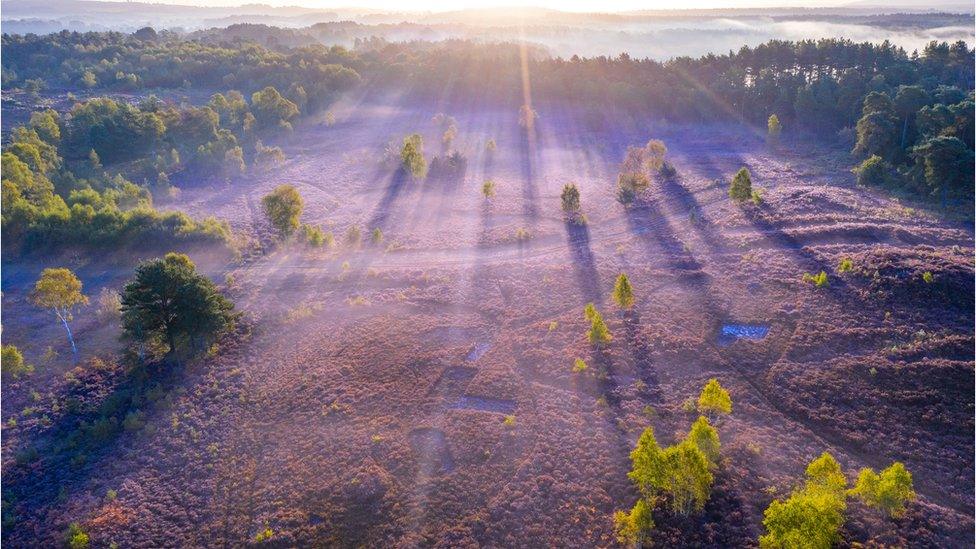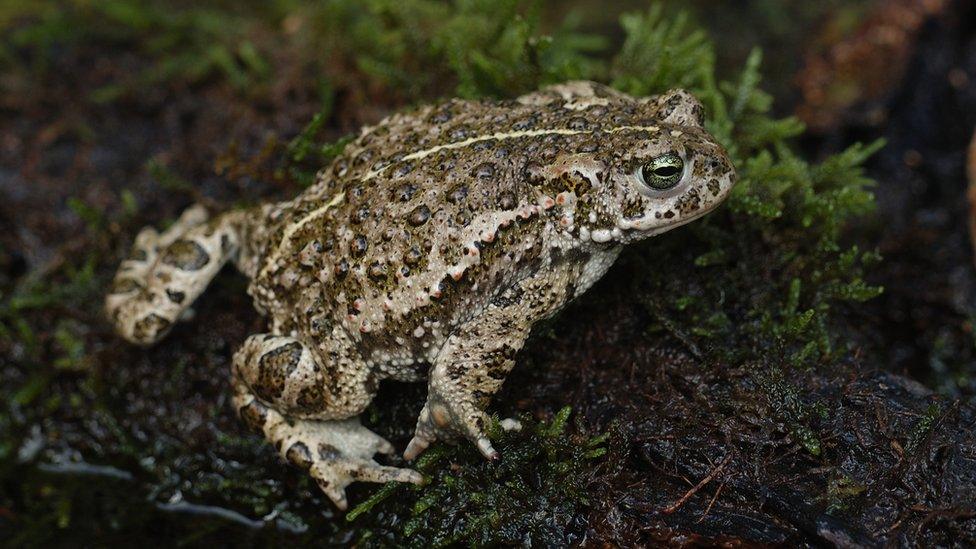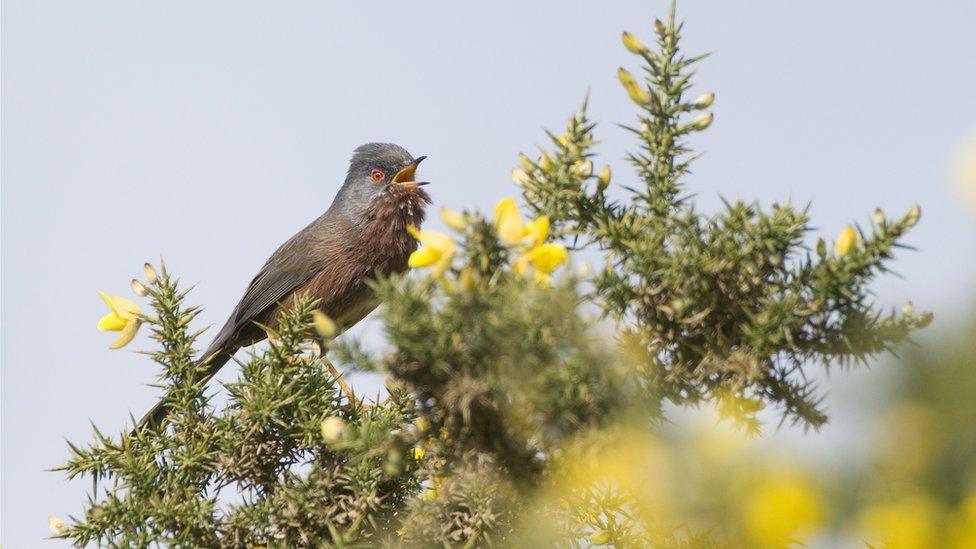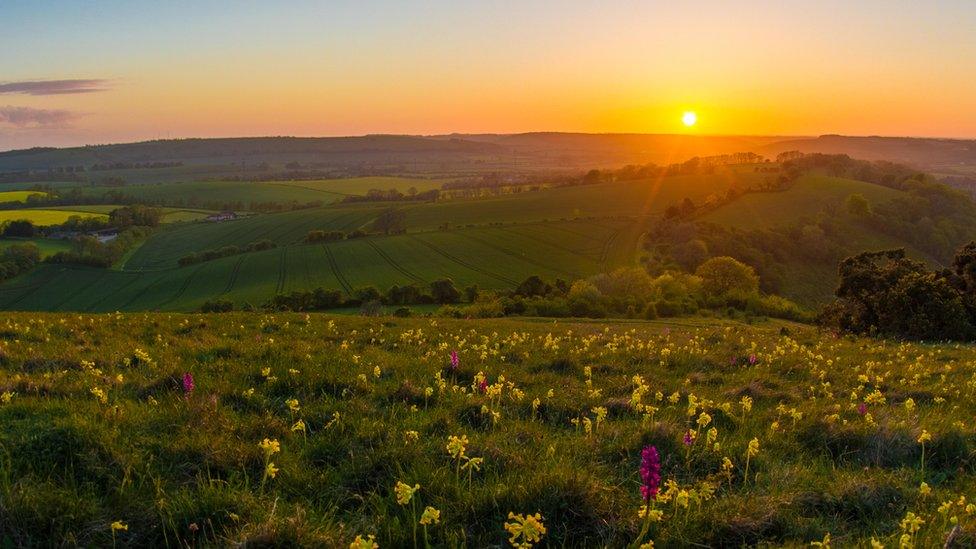South Downs National Park: Sand lizards return to restored heathland
- Published

The sand lizard is extremely rare due to the loss of its habitats
A new habitat has been created for one of the UK's rarest reptiles, the sand lizard, after a five year conservation effort to restore heathland.
A total of 41 sites in the South Downs National Park in Hampshire and Sussex have been restored as part of the Heathlands Reunited initiative, external.
The national park said the need was "profound" as less than one percent of heathland remained.
Endangered species, like the natterjack toad, have also been able to return.
A spokesperson for the national park said heathlands were man-made and "only exist because our ancestors used them to dig peat for fuel, harvest heather and graze animals, unwittingly creating a unique mosaic of habitats which many plants and animals now can't survive without".
They said what heathland had remained was "very fragmented, leaving animals and plants vulnerable to extinction".

The project set out to recreate, reconnect and restore the existing one percent of heathland left in the national park
The restoration project - which received £2m from the National Lottery Heritage Fund - focused on heathland at 41 sites, stretching from Bordon, in Hampshire, to Pulborough in West Sussex.
In total the land was said to add to up to an area roughly equal to 18,000 football pitches.

The natterjack toad is native to sandy and heathland areas of Europe
Woolmer Forest, a site of special scientific interest in Hampshire, was one of the sites restored.
It is home to 12 of Britain's native reptiles and amphibian species and is rated to be in a "favourable condition" for wildlife.
Andrew Lee, director of countryside policy and management at the national park authority, said: "Seeing animals such as the woodlark, sand lizard and field cricket flourish once again is truly inspiring."

The Dartford warbler is one of the endangered species enjoying the heathland habitat
- Published5 July 2021

- Published12 August 2021

- Published15 October 2021
